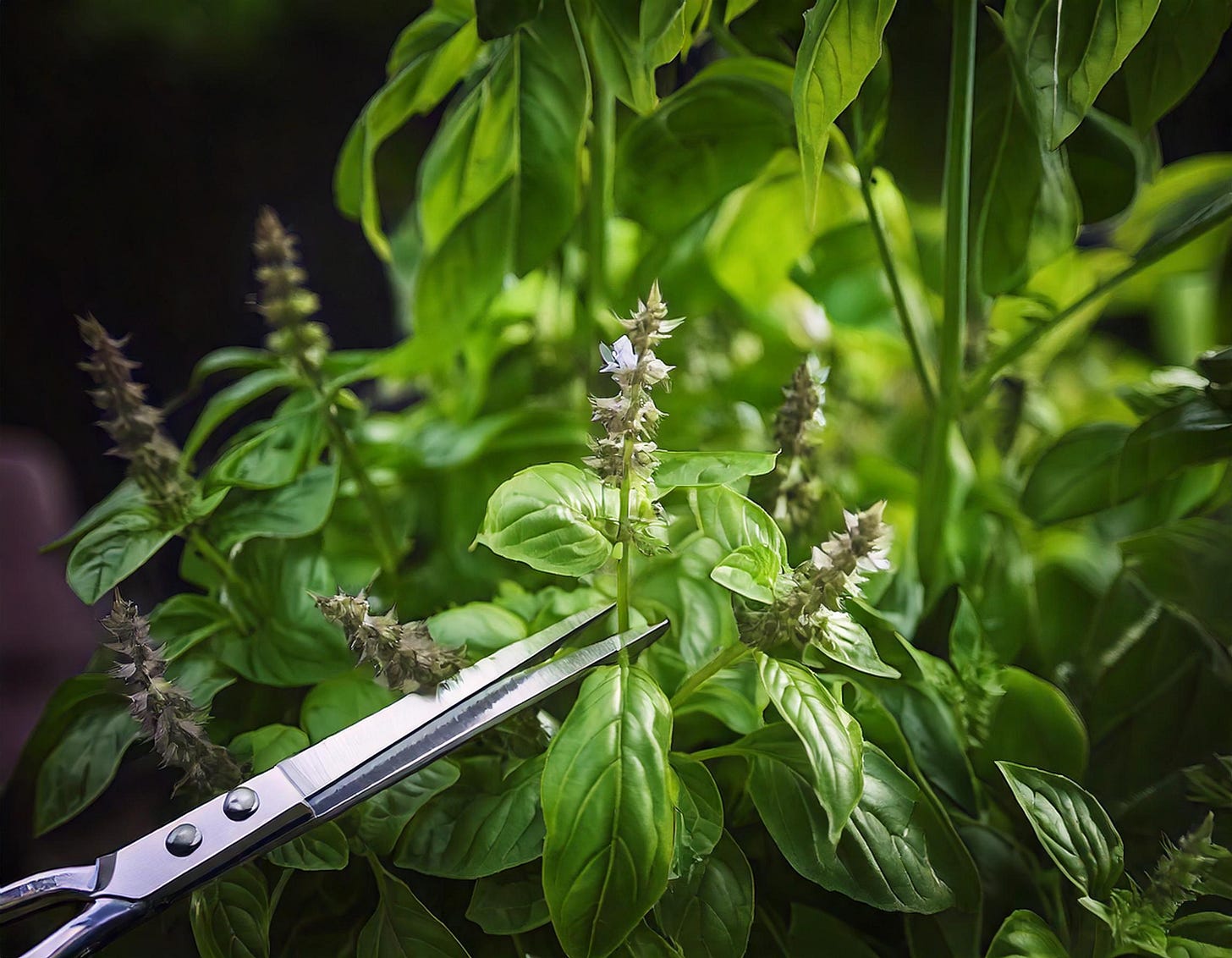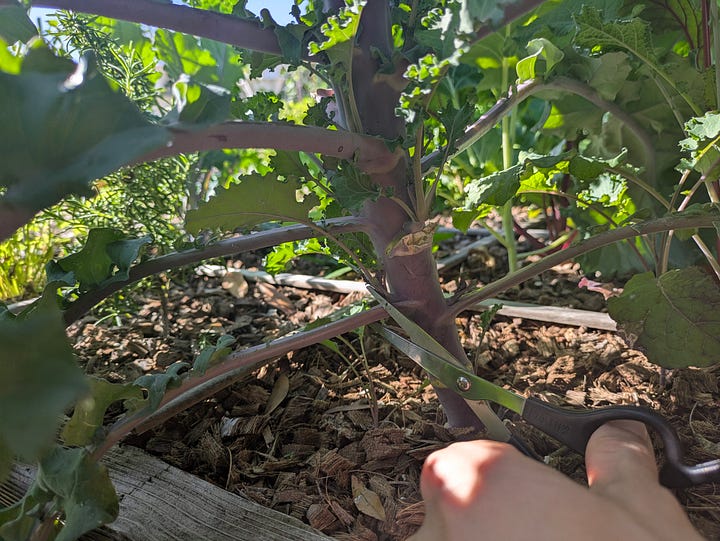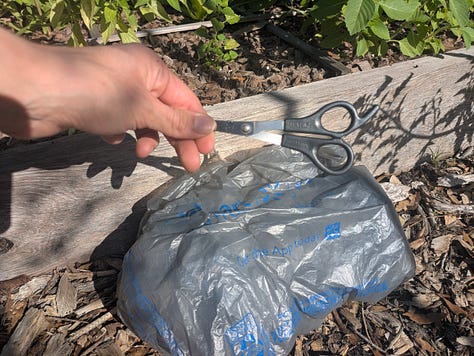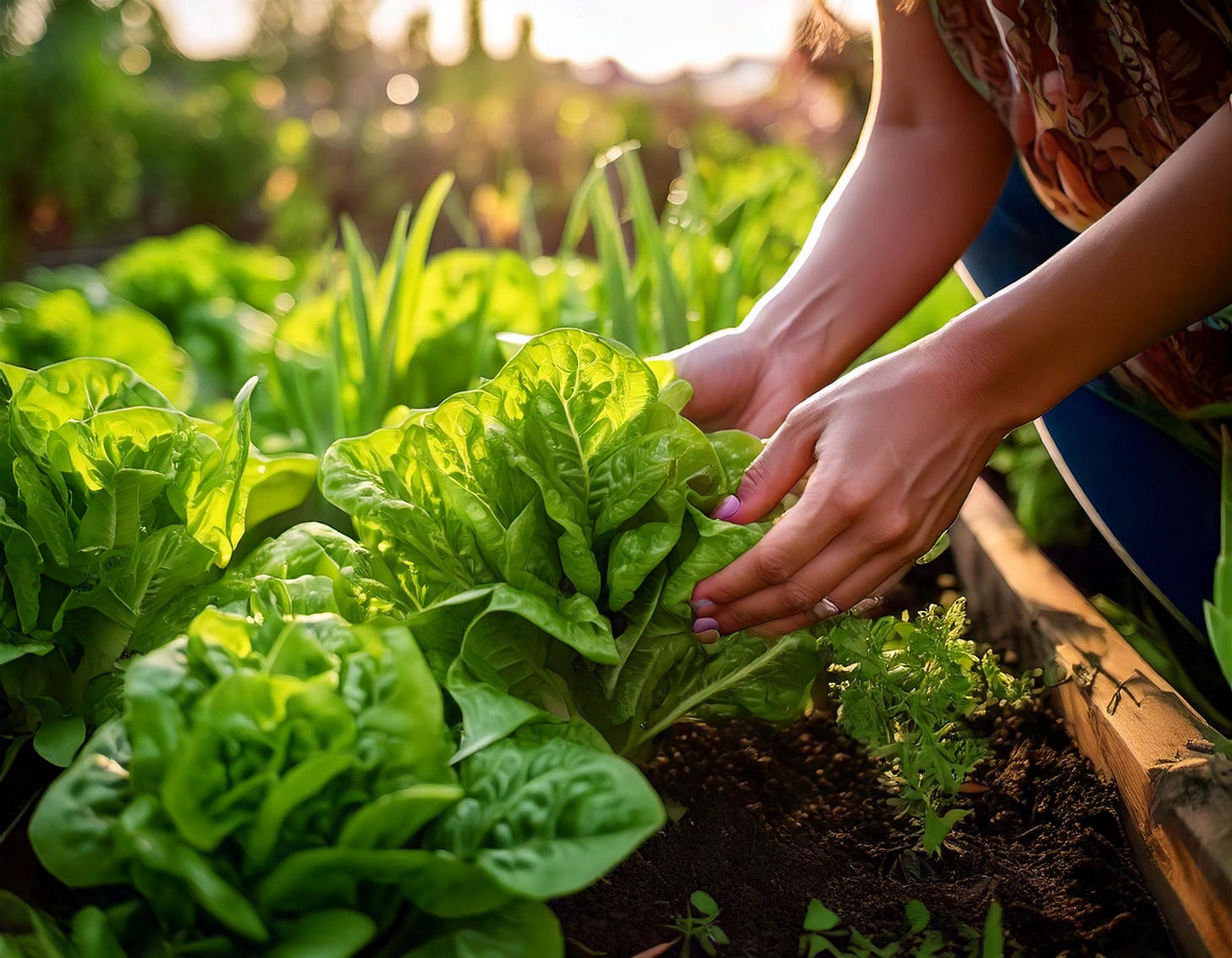3 Golden Rules for Harvesting Lettuce & Leafy Greens
On harvesting lettuce and leafy greens: Learn the best timing, techniques, and tips to keep your garden thriving and productive.
Proper harvesting techniques can feel like a mystery for new and experienced gardeners alike.
Bringing in your garden’s bounty isn’t just about picking food—it’s a rewarding way to see your hard work pay off while keeping your plants healthy and thriving. But if you’ve ever wondered when and how to pick your crops without damaging your plants, you’re not alone.
These three essential tips will not only solve the question of when and how to harvest but also help you avoid common mistakes so your garden stays healthy and productive. Let’s get started!
1. Timing: When to Harvest for Peak Flavor and Nutrition
Knowing when to harvest is key to enjoying your garden produce at its peak—flavorful, tender, and nutrient-dense.
Onions: Harvest bulb onions when the tops have flopped over and turned yellow. For green onions, pick when they’re still young, at about 6-8 inches tall, for a milder flavor.
Garlic: Garlic is ready when the lower leaves start to brown but a few upper leaves remain green. Timing this just right ensures the bulbs are firm and fully formed. Let the garlic cure in a shaded, airy spot after harvesting.
Potatoes: Early potatoes can be dug up as soon as the plants flower, while full-sized tubers are ready when the foliage dies back. Harvest gently to avoid bruising the skins.
Lettuce: Harvest when leaves are firm and bright green, typically 30-60 days after planting, depending on the variety. Avoid waiting too long, as the leaves can become bitter or bolted (when they send up flowering stalks).
Basil: For the best flavor, snip basil leaves just before the plant flowers. Look for healthy, firm leaves and cut at the nodes where new growth appears.

Early mornings are your window for harvesting—when plants are hydrated and at their best. Midday heat saps the greens, making them wilt faster in the bag.
If you can help it, try not to water the garden right before harvesting. Too much moisture on leafy greens or herbs can make them harder to store. A bit of natural morning dew is fine, but waterlogged plants don’t keep as well in the kitchen.
🌕 The Harvest Moon is the full moon closest to the autumn equinox, and has long been a gardener’s ally. Its bright light extends evening visibility, giving farmers and gardeners extra time to bring in their crops before the season turns. Traditionally, this moon marked a time of abundance and gratitude—a signal to gather what’s ready and prepare for what’s next.
2. Technique: How to Harvest Without Damaging Plants
Using proper methods will keep your plants producing longer. While special canvas or muslin bags work for some, I’ve found that my greens wilt faster in them.
I use 3-4 plastic bags and a pair of sharp clippers to harvest my greens.
Plastic bags, though they heat up more easily, help retain moisture and prevent bruising, especially when transferring greens to the kitchen. Using multiple bags also keeps tender greens and herbs separate from heavier vegetables—no more bruised lettuce under a pile of potatoes! Here’s how:
Snip and Clip: Use clean, sharp garden shears to make precise cuts. This reduces stress on the plant and prevents jagged tears that invite disease.
Cut-and-Come-Again Method: For leafy greens like kale, lettuce, or chard, snip the outermost leaves close to the base while leaving the inner growth untouched. This keeps the plant producing over a longer period. Think of it as a careful trim rather than a full haircut.
Handle with Care: Avoid yanking or pulling leaves, as this can damage the plant’s roots or stems, especially in tightly planted areas like raised beds. Snipping is gentler and more efficient.


Clip the large, lower leaves at the stem where they meet the stalk, leaving the central growth to flourish. The plant will focus its energy on new leaves, and you’ll avoid stripping it bare.
For perennial plants or herbs like basil and sage, cut just above a set of leaves.
This encourages bushier, fuller growth, and you’ll get another round of harvest before the plant bolts or fades. When you harvest methodically, you’re not just picking leaves—you’re extending the life of your plants and the abundance of your garden.
💡 Post-Harvest Tip: Once collected, dunk your greens in cool water for up to an hour to hydrate the leaves and shake off unwanted guests—bugs, dirt, or mulch.



3. Maintenance: Keep Your Edible Garden Thriving
Harvesting doubles as garden maintenance. It’s the perfect time to weed, deadhead flowers, and check for pests or signs of disease. Keep an eye out for leaves that are wilted, browning, or damaged—these go straight into the compost pile. Be careful, though: keep seeds and diseased plant parts out of the compost bin, as they can spread problems even in high-heat composting systems.
A healthy garden works in cycles—nothing goes to waste:
Clean Your Tools: Prevent disease by regularly sanitizing shears with diluted vinegar water or a light bleach solution.
Conserve Water: Use collected rainwater or rinse efficiently to avoid unnecessary water waste.
Compost Scraps: Return spent leaves and harvest scraps to the soil through composting to keep your garden naturally nourished.
Manage Bolting: If plants start to bolt, harvest the seeds for future planting. For a quick fix, snip off seed heads early to keep the plant producing longer.
Enjoying Your Harvest All Season Long
There’s something deeply satisfying about snipping a full bag of greens with the sun barely over the horizon. It’s food you grew, picked, and earned. The cut-and-come-again method isn’t just about extending a crop—it’s about recognizing when enough is enough. You take a little, leave a little, and find yourself with more than you started.
Before you start harvesting, take a moment to snap a picture of your garden or the day’s harvest. Plants grow quickly, and it’s easy to forget where things began. Whether it’s a tangle of kale, a basket of peppers, or your first handful of basil, these snapshots tell the story of your hard work and progress.
I’d love to see what you’re growing! Drop a comment below or share your garden photos (or your harvest haul) with me—let’s celebrate the small victories together.
And remember: taking out the entire plant isn’t necessary.
You can continue to harvest from most vegetable, herb and medicinal plants, even after intensive picking, as long as the roots and central growth remain intact.
Happy harvesting!
☀️ Related Topics: How to Grow an Organic Garden Anywhere: A Step-by-Step Guide



